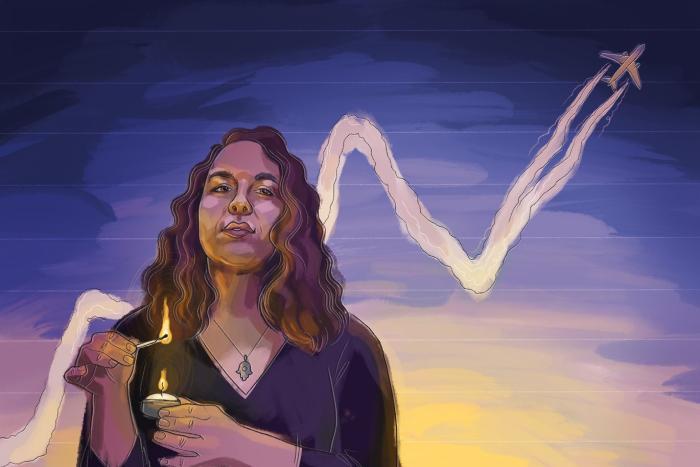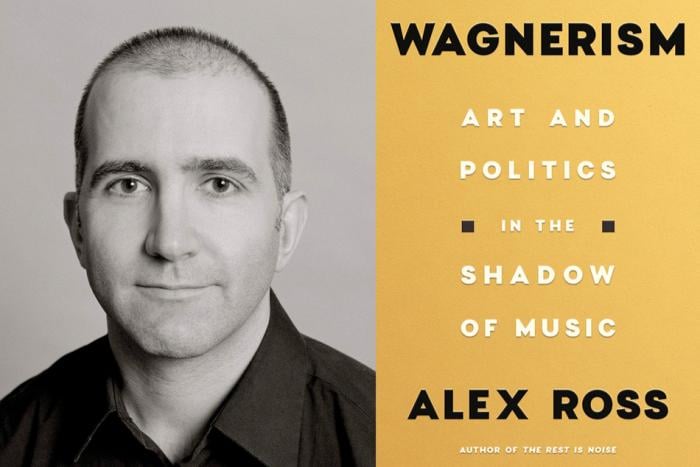What were we obsessed with, invested in, and beset by in 2020? Hazlitt’s writers reflect on the issues, big and small. Keep up with this year's series here.
Like most of us this year, I have developed new tactics for not screaming into the void more than my daily quota allows. Mask on, I force daily sanity walks on myself, darting away from those who get too close, dancing up sodden little hills and down curbs until I’m back at my tiny apartment, covered in stress sweat. Despite my love of deking around barrel-chested men, I’d rather not drain my adrenal stores while buying tampons. I began taking evening walks, free to wander far into the quiet recesses of Toronto’s many neighborhoods, with only the occasional dog to nod at.
The benefits of this adjustment, besides the comparably empty streets, include something that I’ve always enjoyed, but have never formally embraced: looking into strangers' windows. Before you dial 911 on your microwave, let me elaborate. When I began making a more conscious viewership of interiors, I determined a set of rules to avoid feeling like the wrong type of perv. By my own authority, I may “glance” “within” someone’s window if a) they've left the curtains open, b) they are not present in the room, c) I do not fully stop to get a better look, and d) I do not leave the perimeter entailed by the sidewalk. Politely canting my head towards the house in question could be construed as a sign of respect, if also a minor intrusion. To me, it’s like window-shopping. Instead of mannequins, I browse floor-to-ceiling bookshelves, hovering bunches of helium-filled balloons, tiers of potted plants, and once, in fact, a serenely armless mannequin.
Kitchens are best. Nearly every night, I pass a butter yellow one that faces my local park. I always fall to admiring the wall-mounted wooden dish rack that displays plates front wise, a thing I’ve only ever seen in New England-set dramatic feature films.
To me, an empty room represents potential. Back when I used to attend plays, few things made me happier than sitting in the house—a beautiful contextual use of the word—gazing at the bisected interior of a living room or a kitchen or an entire home; a life-sized Polly Pocket. I knew that presently, some door would spring open, a light would turn on, a newspaper would be tossed on a chair. There is something exciting about anticipating a space before it is inevitably interfered with by a human—what might also be called living.
Sometimes, though, my mood sours when passing certain favoured houses, feeling the distance between the turreted mansions and my own lightless apartment; the distance between me and the better me, who would live in one of these glowing houses. Try as I might, I can’t shake the feeling that where I live is a reflection of me as a person, and wouldn’t I be just so much better if I lived in this Victorian rowhouse? Architectural Digest surely thinks so.
A value so often applied to distance is the realization of the bigger picture—the vista we are only capable of seeing when forced to move a few paces back for one airborne reason or another.
In May, I began noticing the tents pitched in many of Toronto’s downtown parks. At first glance they looked like impromptu campgrounds, perky and colourful under trees in full flower. Huh, I thought. That seems new.
With the already overcrowded city shelters unfit for safe use due to COVID-19, and evictions looming, encampments quickly spread beyond the places where you might typically see them, for instance, tucked between trees and under overpasses in the Rosedale Valley—shelters of all shapes and material. Over the years, there has been a redoubling of city-initiated sweeps—intentional clearings of improvised shelters deemed, among other things, as fire hazards. City officials say that this is done in an effort to direct people living in camps to shelters or other, safer, temporary housing options. Many of those evacuated return to the in-between spaces, quickly rebuilding their modest shelters until another inevitable sweep once again clears them out.
Nearly two years ago, Nicholas Hune-Brown wrote in Toronto Life that, “As wealth fills every crevice of the downtown core, [people] aren’t just excluded from prosperity—they’re punished by it, left to watch as the city’s affordable housing options are knocked down to clear the runway for Toronto’s rapid, unstoppable ascent.”
Hune-Brown wrote about the “gradual accretion” that led to the then—and now current—crisis. At present, there are 8,700-9,000 people in Toronto experiencing homelessness (a number that reflects only those who can be accounted for). This adds more than 2,000 people to the number Hune-Brown cited as growing between 2016-2018. Numbers don’t offer the most sympathetic perspective, but they don’t lie. Whatever is pushing people out of permanent housing and into the window of temporary or chronic homelessness, it is only growing stronger.
As of summer 2020, camps were pitched in just about every park I passed on my walks, including the southern spots like Moss Park, Alexandra Park, Trinity Bellwoods, and Cherry Beach. Clusters and lines of tents and tarps and sleeping bags and kitchen chairs and piles of soft belongings and Gatorade bottles; everything that a person with a home has the privilege of keeping tucked in some IKEA storage unit or another. Here it was, placed out in the open. This includes the residents themselves, who might seek shade under a leafy tree, or smoke with friends, or otherwise find ways to fill the hot days that we all sought refuge from.
Encampment residents are frequently harassed by police, threatened with eviction, ticketed, and neglected by the underfunded social services meant to help them. Bolstered by a municipal by-law that forbids camping in public parks, tents have been slashed, overturned, and violated. Mayor John Tory lifted the ban on encampment evictions in August, which has made the encampments even more vulnerable to the whims of those who want them gone under the bad faith argument that it’s for the residents’ own good. In June, there were 14 current COVID-19 outbreaks, 528 confirmed cases, and four deaths—in shelters. In the encampments that have been tested for COVID-19, there were none.
All this happened more-or-less coterminously with Toronto’s Black Lives Matter protests, and the calling for a 10 percent defunding of police services. Instead of defunding, two thirds of city councillors voted to keep the $1.2 billion gross operating budget of the police intact.
Contesting those who would have the encampments removed is the volunteer-led Encampment Support Network. Since the spring, ESN has mobilized an ad-hoc team of people to be present for the various encampment communities sprawled across the city. That could mean providing them with donated water and energy bars during the hottest days of summer, first aid, outdoor yoga classes, use of phones/tech, and friendship, to name just a few essentials. They have publicized their advocacy for the encampment residents, calling them neighbors and featuring encampment friends on their social media by name. ESN is further dissolving the boundaries between the housed and the unhoused by creating opportunities for supporters to participate however they can, from organizing winter boot drives, to donating ice and food, to spending time with the residents and getting to know them more intimately, Many artists, like Michael DeForge, have created art (that rips) in support of the encampments—colourful and energized graphics that reflect the optimism behind the efforts of the residents, organizers, and volunteers.
One of the most surprising accomplishments of ESN is their insistence on making the encampments—and the city’s efforts to break them down—as visible as possible. The public nature of homelessness, in this case, has been the thing that allows us to begin really seeing what has been here all along. More and more, the beautiful houses that I swoon over felt symbolic of something painful in our city. Awareness of inequality manifesting as pleasure in these beautiful and unavailable homes, a way for me to avoid thinking too hard about the more pressing disparities. Instead, I nurtured the reliable gripe I’ve held for years in some form or another: that I don’t have enough.
In Toronto’s well-kept parks, the encampment communities have become a palpable reminder of the people whom the city, when not facing a pandemic, does an excellent job of keeping on the fringes of awareness. During a very cold winter, I will worry about the people who curl up in sleeping bags in front of banks or over warm-ish grates, but they are intermittent enough to be forgotten by a self-absorbed person like myself within minutes of passing. But I can’t do that now, not with the constant reminders of the encampments, which flow from public space to public space, even filling a little roadside arena at the corner of Queen Street and Dufferin, tents climbing up the incline. Never have I been so viscerally reminded of shelter poverty and the enduring housing crisis that existed in Toronto long before Trump suggested we might protect ourselves with bleach infusions.
Upwards of 1,500 people currently live in Toronto’s encampments, more than twice as many as the number of new shelter spaces the city has created, including an interim respite, installed at Exhibition Place’s Better Living Centre. When the images were released in November, public response was aggrieved, to say the least. The Better Living Centre respite is perhaps one of the bleakest interiors I have ever seen; a squat building converted to a chilling warren of glass walls with cots that look poised to interrogate hostages. As ESN plainly articulated in a statement released on October 23rd, “We visit the same encampments every single morning…People want housing, they want homes where they will be safe and warm. Every day we lend residents our cell phones to call 311 and ‘Central Intake’ who coordinate shelter spaces. We ask for temporary shelter, for hotel rooms, for beds. Every day we are told there is nothing available.”
When I started writing this, I intended to discuss my love of interiors. But, as I often find when lingering on something comforting, I also discover its inverse truth. Considering something like beautiful home interiors makes it unconscionable to discount the reality of exteriors. I stand by what I said: empty rooms represent possibility, and as we move into another cold, in many cases fatally cold, Canadian winter, what is it that we as individuals, a city, a province, a collective psyche need to do to join those empty rooms with the people who want and need them, with dignity and aid to make places where they feel safe, dignified, and wanted? How do we apprehend what to me feels obvious: that shelter is a human right and its commodification has made us defensive of what we have, and wary of those who don’t?
I love kitchen nooks and big cushion-strewn beds and fabulous windows that let in the morning light. I love original moldings and hand-painted ceramic tiles and shelves built of wood “rescued” from old barns. Rooms, and those permitted to fill them, exist on a continuum. To possess the good room I must avoid the bad room. But I can’t persist in believing myself worthy of the good room when I live in a city, in a country, in a world that thinks and politicizes the belief that so many of us are not.
In 2020, we have all been forced to reckon with a suffocating sense of what’s ours, and how we might make each other sick because of it. This year, I have so frequently felt that I am pressed against the window of my own existence, desperate to find my way back to a world where I may feel what others feel, smell their pungent perfume, get my foot stepped on. It was not the briefly glimpsed interiors that made me aware of this, but the encampments.
In a different world, the tents would disappear as our neighbours ceased to need them. But until that happens, I hope we never stop seeing them and everything they mean about this place where we all live, despite how it can feel, together.






